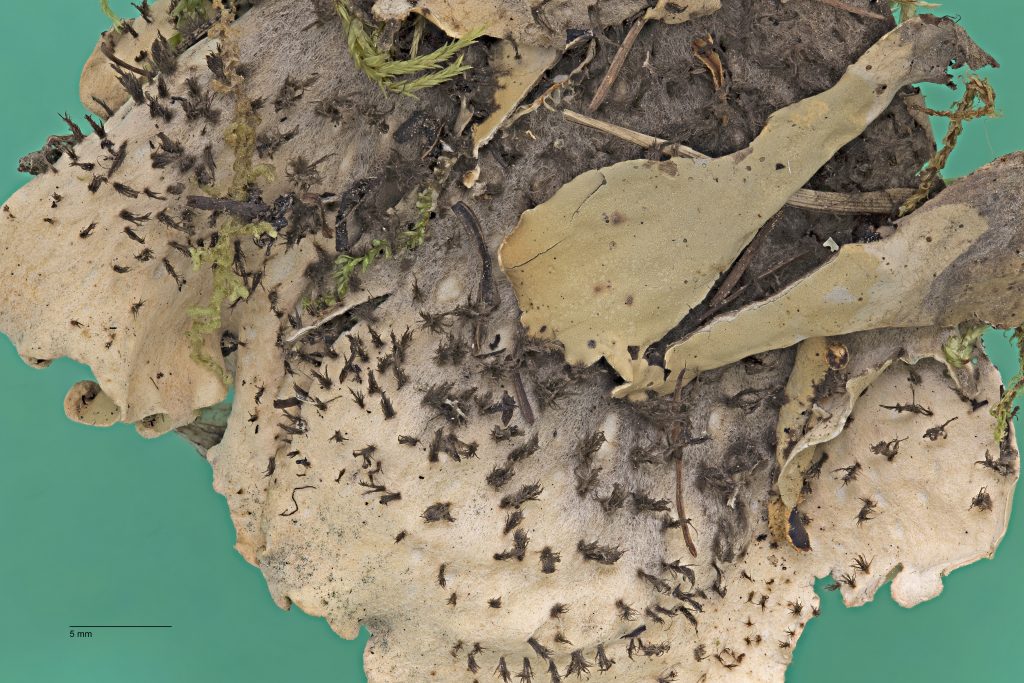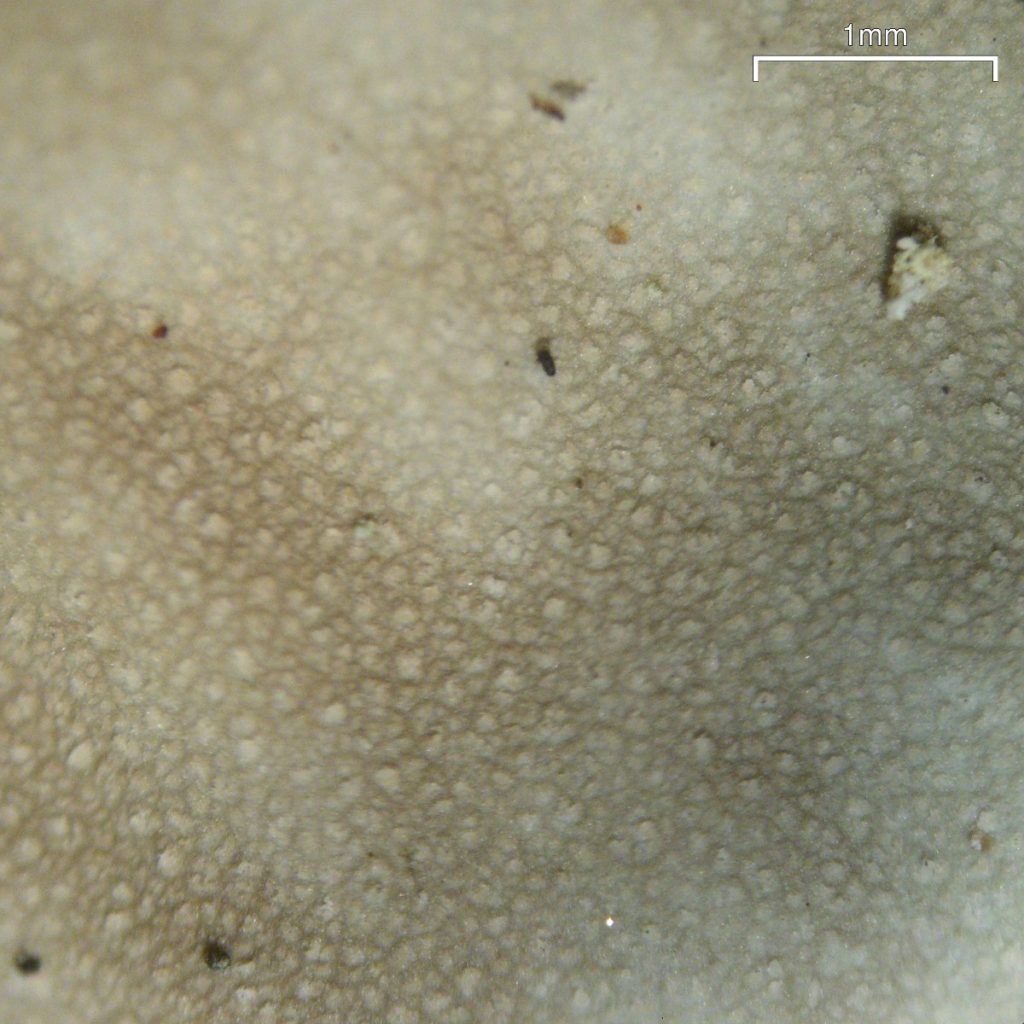Peltigera scabrosa Th. Fr., 1861, including P. scabrosa Th. Fr. s.l., including P. rangiferina Magain, Miądl. & Sérus., 2023 & P. borealis Magain, Miądl. & Sérus., 2023
| Common name | Scabby Pelt |
|---|---|
| Codes | PELTSCA, PELTRAN, PELTBOR |
| Field Characters | Large leafy bipartite cyanolichen. Thalli composed of individual lobes forming overlapping colonies. Lobes rounded, branching sparingly and shallowly, typically thin. Upper cortex plane to lightly quilted with cupped, rounded lobe edges, grey to blue-green when dry, blue-grey to jade green when wet. Upper cortex scabrose (=with crystalline deposits of minerals and dead hyphae, almost like psoriasis). Lower cortex lacking, lower surface with contrasting tan to black veins and shallow interstices. Rhizines typically black, short and tufted. Apothecia copper to red-brown, fingernail to saddle-shaped. Vegetative propagules lacking. |
| Similar species |
Peltigera kristinssonii also has a scabrid upper cortex in part but its lobes are narrower, and its veins are strikingly black. Lightly scabrid thalli might be confused with P. neopolydactyla but that species has long, simple rhizines. |
| Ecology | On moss or litter in mature to old-growth conifer dominated forests, particularly common in old black-spruce stands. Present in foothills and boreal, occasional in montane and shield sites, absent from parkland and grassland sites. |
| Chemistry | Not investigated. |
| Molecular support |
High, represented by 3 well-supported molecular clades that recently were formally delimited and described (Magain et al. 2023). Given the segregate species are so new, most collections are still identified as P. scabrosa. We continue to work to understand how these species differ morphologically and ecologically. |
| Links | |
| Gallery |
- Peltigera scabrosa, NWT
- Peltigera scabrosa lower surface with tufted black rhizines, ABMI collection
- Peltigera scabrosa, scabrid upper cortex, Wells Gray Provincial Park, BC




